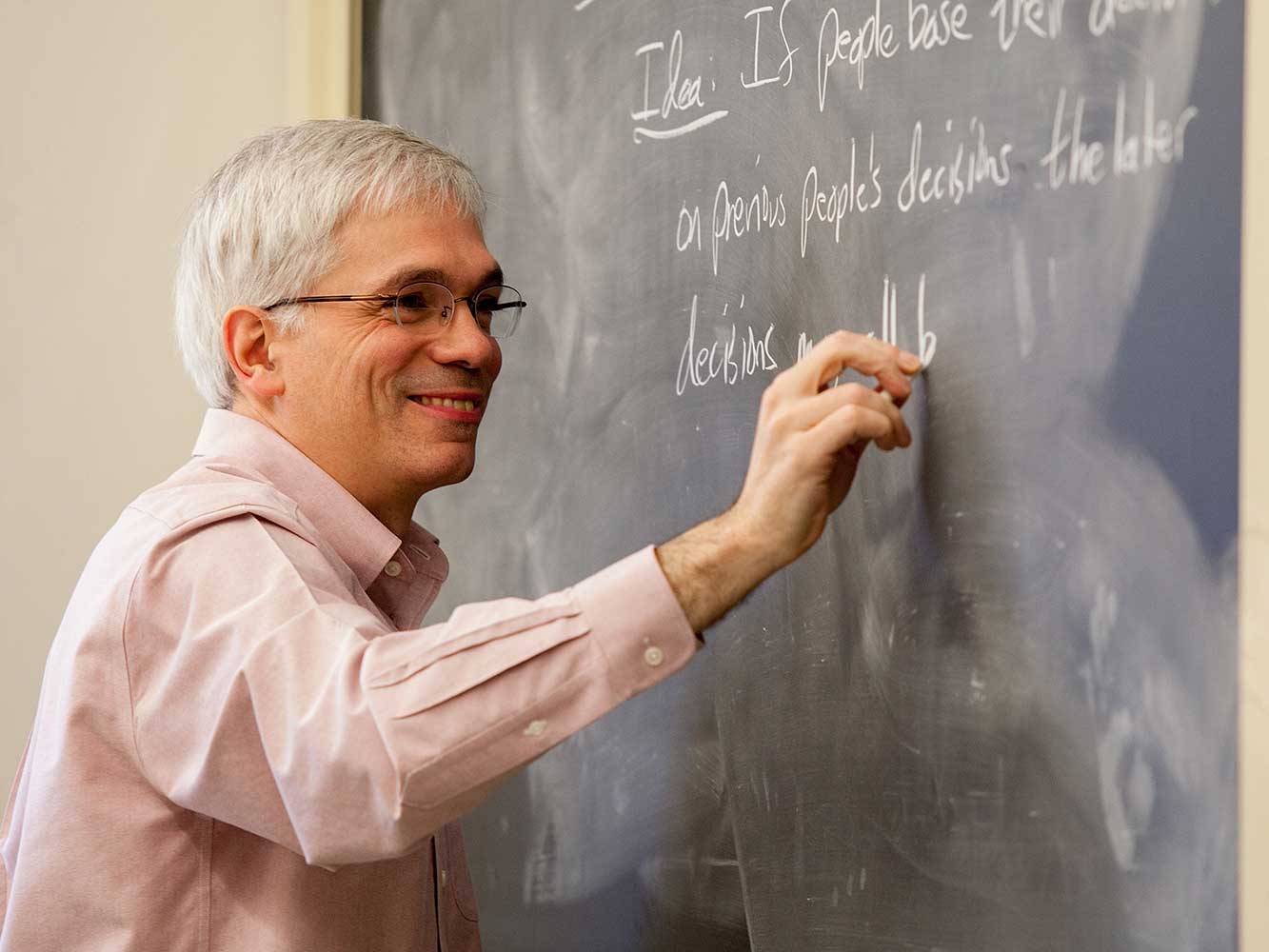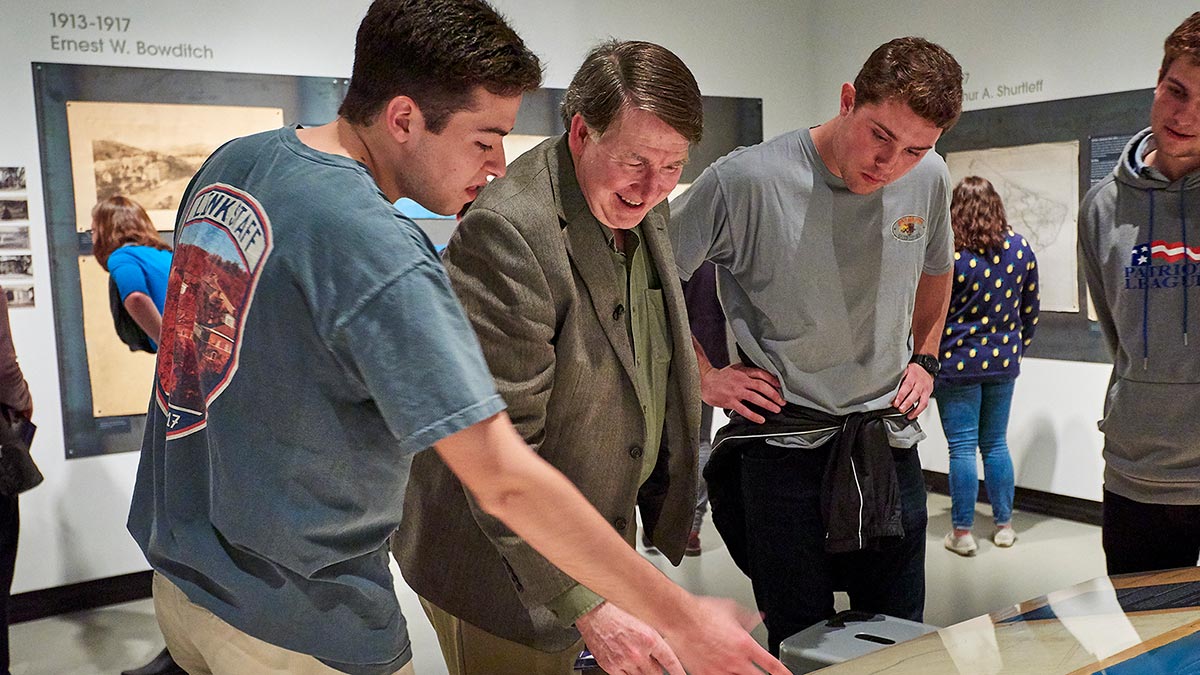

The Picker Interdisciplinary Science Institute funds forward-looking research, conducted by leading faculty and their student assistants.

Colgate’s Picker Interdisciplinary Science Institute (ISI) turns 12 this year. The impact that the institute has already had on Colgate’s reputation for academic rigor hints at a promising future.
“At the institute, we look for proposals that best meet the criteria of an interdisciplinary project, with potential for future work and the opportunity to develop faculty connections,” Picker ISI Director and Charles G. Hetherington Professor of Mathematics Dan Schult says. “The criteria don’t specify research areas — the faculty choose the topics. The criteria are designed to encourage projects that are at the intersection between two areas of training, that get added value from collaboration.”
Most projects are oriented toward natural science. But some have crossed the college’s divisions with faculty from the natural sciences working with faculty from the social sciences as well as humanities.
A scientific look at antiquities
With the help of Picker funding, Classics Professor Rebecca Ammerman was able to team up with a geologist at the University of Patras in Greece to determine the chemical composition of Greek pottery. This information has allowed Ammerman to develop a greater understanding of ceramic production and trade in the ancient world.
The mathematical arts of an engineering feat
Art, math, and engineering came together in DeWitt Godfrey’s statue Odin, the 13-ton work that now resides between Olin Hall and the Robert H.N. Ho Science Center, thanks to Picker support. Godfrey worked with emeritus math professor Tom Tucker, a London engineer, and a Slovenian mathematician to find the perfect stacking arrangement for Odin’s 240 unique conic sections.
Biological clocks meet academic and athletic performance
More recently, Krista Ingram has been studying the impact of your biological clock on performance at work and at play. Her findings suggest that genetic markers can predict which students are more likely to excel on morning exams and which athletes will perform better at an evening workout or night game.
Are quantum mechanics the future of medical diagnoses?
Quantum mechanics allows particles to be disconnected yet tethered, entangled yet coexisting at a distance from one another. Professor Kiko Galvez is entangling particles, sending one into a tissue cell and the other into a scanner. Scientists could be able to monitor a particle passing through tissue by watching for reactions in its sibling inside the scanner. This new idea has potential for development of less invasive medical diagnostic techniques.
Art imitates art
Artists and computer game writers need reliable techniques for rendering 3D objects on a 2D surface. Colgate computer scientist and assistant professor Elodie Fourquet has paired up with Flip Phillips, professor of psychology and neuroscience at Skidmore College, to answer the question of why artistic approaches taken by Renaissance painters worked so well on canvas. How does the visual processing nervous system interpret perspective?
Although Picker administrators do not plan overarching themes for research funding, they note that patterns of high interest exist of their own accord, given the trends in academia and the world. Three in particular stand out to Schult: the DNA revolution and how DNA affects behavior of organisms and systems; the end of Moore’s Law and its prediction of increasing ability to pack ever more transistors onto an integrated circuit; and data science, a.k.a. big data.
“Big data is really statistics on steroids, and the research is being led by industry, which is interesting,” Schult said.
The availability of huge data sets, both private and proprietary, and powerful computers to crunch the numbers has changed the nature of statistics. Using standard methods, said Schult, researchers turn to a data set and ask of it, “Does this model fit? Yes or no.” Today, they are more likely to turn to a computer and say, “Here is a bunch of data. I don’t know what the model is going to be. Find the model for me.”
What does that mean in day-to-day life? Think, Siri, I have this picture — can you tell me who it is?
Schult himself is conducting research with biologists and physicists to improve hardware models of neurons so they will more closely mimic human neurons. “The artificial intelligence world is using incredibly simple models of what a neuron does in neural networks,” Schult said. “We call it neural networks, but they’re not like real neurons.”
While technology companies are moving forward quickly on artificial intelligence, Schult believes that our simplistic approach to human-made neural networks will ultimately slow progress — unless it can be overcome. “We need to take a step back and get a better hardware model of what a neuron does.”
That, in part, is exactly what the Picker ISI was designed to do: give faculty the chance to step back, interact, think, and then move forward on research projects they couldn’t do alone. Meanwhile, funding and collaborative opportunities level the playing field between Colgate and larger research universities.
“We have top-notch, world-renowned researchers working here, and that’s unusual for a liberal arts university,” Schult said. “The impact on students is huge, because they are in touch and connected with these research projects, which are frontier work.”


